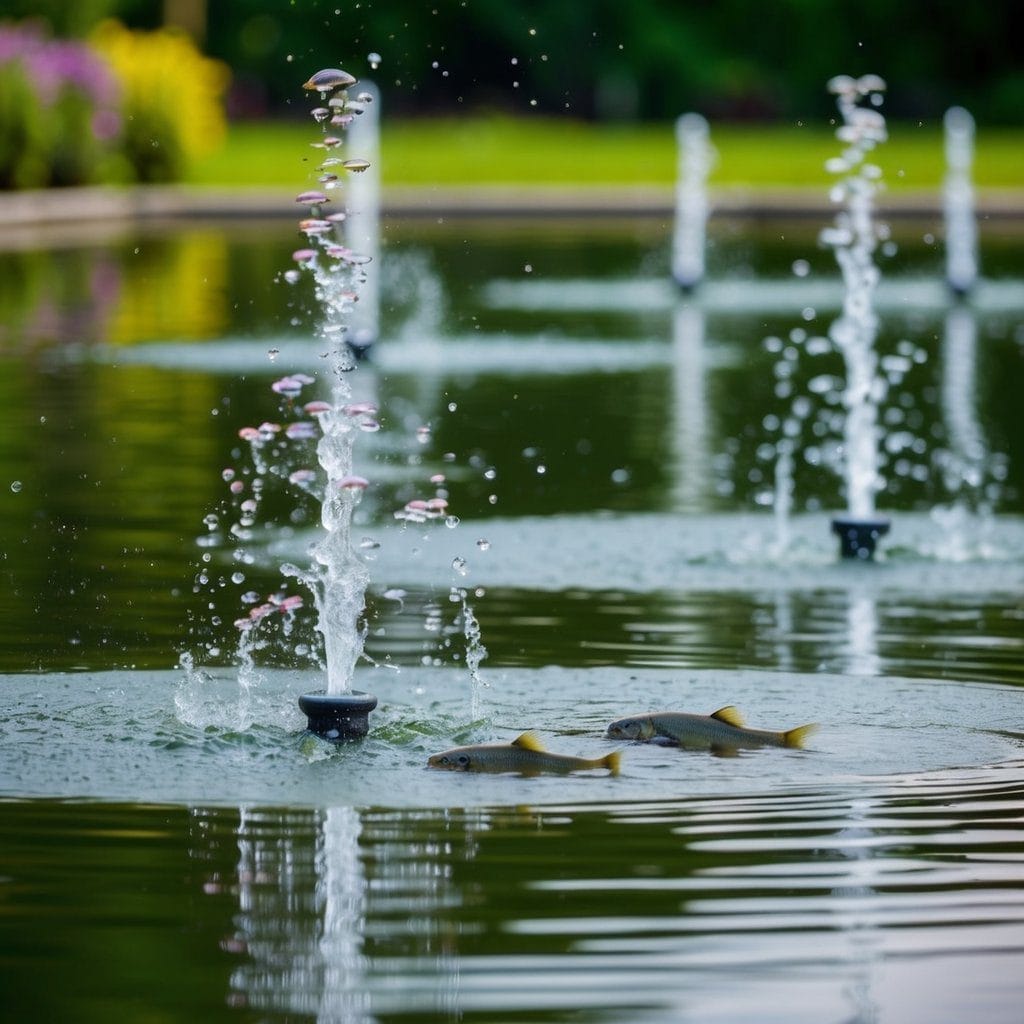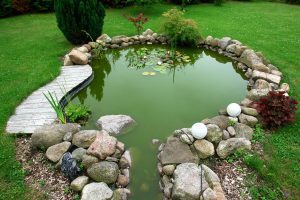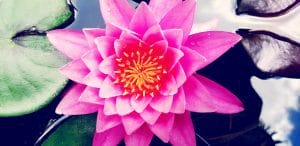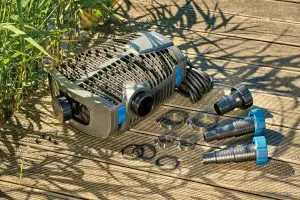
Benefits and Best Practices for Using Jets in Your Pond: Enhance Aeration and Aesthetics
Adding jets to a pond can significantly enhance its health and appearance.
These devices improve water movement, increase oxygen levels, and help manage debris, making the pond environment more vibrant and appealing.
Understanding the best practices for using jets is essential for any pond owner looking to optimise their aquatic habitat.

Selecting the right jets and positioning them effectively is crucial.
Proper installation can create a beneficial flow that supports fish and aquatic plants while preventing stagnant areas that could lead to unsightly algae growth.
This thoughtful approach not only enhances the pond’s aesthetic appeal but also promotes a balanced ecosystem.
Maintaining jets throughout the year ensures consistent performance, allowing them to work effectively across changing seasons.
By following best practices, pond owners can enjoy the many benefits of jets, transforming their space into a thriving and inviting sanctuary.
Key Takeaways
- Jets enhance water circulation and oxygen levels in ponds.
- Proper installation and positioning are vital for optimal performance.
- Regular maintenance keeps jets functioning effectively all year round.
The Importance of Pond Circulation
Pond circulation plays a vital role in maintaining a healthy aquatic environment.
Proper movement of water aids in oxygen levels and fosters the growth of beneficial bacteria.
These factors are essential for keeping fish and plant life thriving in any pond.
Maintaining Oxygen Levels
Oxygen is crucial for all aquatic life.
In a stagnant pond, oxygen levels can drop, especially in warmer months. This can lead to fish stressing or even dying.
Using jets can improve water circulation, ensuring that oxygen-rich water reaches all areas of the pond.
When jets create movement, air is mixed into the water. It promotes better oxygen distribution throughout, preventing dead zones.
Additionally, circulating water helps break down organic matter more efficiently.
This process releases oxygen, which is beneficial for fish, plants, and even microbes.
To maintain healthy oxygen levels, it is important that water is circulated at least once an hour. Regular maintenance of circulation systems is essential for optimal performance.
Promoting Beneficial Bacteria
Beneficial bacteria play a key role in breaking down waste and keeping a pond clean. Without the right conditions, these bacteria may struggle to thrive.
Good circulation helps ensure that nutrients from fish waste and decaying plants are evenly distributed.
When water moves, it provides a balanced environment for bacterial growth. This balance is vital for the natural biological filtration process in the pond.
Moreover, a well-circulated pond can prevent the buildup of harmful substances.
Stagnant areas can become breeding grounds for harmful bacteria and algae. By promoting beneficial bacteria, jets help maintain a healthy ecosystem.
Assessing Pond Size and Jet Requirements

Understanding the size of the pond and the specific jet requirements is crucial for ensuring optimal water circulation and health. This involves calculating the pond’s volume and deciding the best strategies for jet placement.
Calculating Volume and Flow Rate
Calculating the pond’s volume is the first step in determining jet requirements. The volume can be found using the formula:
Volume = Length x Width x Average Depth
For irregularly shaped ponds, break the area into smaller sections, calculate the volume for each, and then sum them.
Once the volume is known, flow rate calculations are next. A general guideline is that the pump should move the entire volume of the pond at least once every 1-2 hours.
For example, if the pond is 1000 litres, a pump with a flow rate of 500-1000 litres per hour is suitable.
Jet Placement Strategies
Proper jet placement can enhance water movement and improve water quality. The jets should ideally be placed at the pond’s deep areas to maximise circulation and prevent stagnation.
Consider these strategies:
- Place jets opposite any inflows to promote even distribution.
- Configure jets at angles that create water movement across the surface.
- Avoid placing jets directly pointing at plants to prevent damage.
Testing different placements can help determine the most effective configuration for the pond’s unique shape and features. Adjusting jet angles and positions can lead to improved circulation and a healthier pond ecosystem.
Choosing the Right Jets for Your Pond
Selecting the right jets for a pond is essential for maintaining proper water circulation and enhancing its overall health. This section discusses the different types of pond jets available and factors related to their material and durability.
Types of Pond Jets
There are various types of pond jets, each suited to different needs.
Surface Jets: These jets are designed to create surface agitation, promoting oxygen transfer. They work well in shallow ponds.
Subsurface Jets: These push water from beneath the surface, ideal for larger and deeper ponds. They allow for better circulation throughout the pond layers.
Fountain Jets: Aesthetic and functional, fountain jets add beauty while aerating the water. They can vary in height and shape, depending on the model.
Directional Jets: These can be adjusted to direct water where it is needed most. This flexibility is useful for targeting specific areas of the pond.
Material and Durability Considerations
When choosing jets, material quality is crucial for long-term performance.
Plastic: Lightweight and resistant to corrosion, plastic jets are budget-friendly but may not last as long as metal options.
Metal: Stainless steel and bronze jets offer greater durability and resistance to wear. They are suitable for ponds with harsh conditions.
UV Resistance: It’s important for jets to resist UV degradation, especially in sunny environments. Look for materials designed to withstand prolonged sun exposure.
Maintenance Needs: Durable materials can reduce maintenance efforts. Choosing quality jets can prevent frequent replacements and repairs.
Considering these factors will help in selecting the right jets to ensure a healthy and efficient pond environment.
Installation Basics for Pond Jets

Installing jets in a pond is crucial for maintaining clean and healthy water. This process involves careful planning and the right tools to ensure effective water circulation.
Step-by-Step Installation Process
Plan the Placement: Before starting, determine where to place the jets. It is best to install them at least 30 centimetres from the pond’s edge. This allows for better water circulation without disrupting plants.
Prepare the Area: Clear debris and sediment from the installation site. Ensure that the pond’s liner is not damaged. Proper preparation is key to a successful installation.
Position the Jets: Place the jets about 30 centimetres below the surface. They should be angled slightly upward to create a surface current. This helps direct leaves and debris towards skimmers.
Secure and Connect: Attach the jets to the plumbing system. Ensure all connections are watertight to prevent leaks. Proper installation will maximise water flow.
Test the Functionality: Once installed, turn on the system and observe the jets in action. Make adjustments as needed to achieve optimal water movement.
Tools and Equipment Needed
To install pond jets effectively, certain tools and equipment are essential:
- Jet Units: Choose quality jets that match the pond’s size and desired flow rate.
- Pipe Fittings: These will connect the jets to the existing plumbing system.
- Sealant: A waterproof sealant is necessary to prevent leaks.
- Drill: A utility drill helps in creating holes if needed for secure placement.
- Wrench: This is essential for tightening the fittings securely.
- Level: A spirit level ensures the jets are positioned evenly.
Optimising Jet Flow for Fish Habitats

Creating the right flow with jets is essential for fostering a healthy fish habitat. Careful consideration should be given to how water moves in the pond, particularly when keeping koi or other fish species. Two main aspects are crucial: crafting a naturalistic flow and managing water movement levels.
Creating a Naturalistic Flow
To support fish well-being, jets should mimic natural water currents.
Positioning jets correctly can help circulate water without creating turbulence.
Key tips include:
- Placement: Position jets to guide water toward fish hiding spots, such as plants or rocks.
- Angle and Height: Set jets slightly below the surface and angle them toward the water surface. This helps in mixing oxygen into the water effectively.
- Gentle Movement: A gentle current allows koi to swim comfortably while avoiding stress. It promotes natural behaviours, as fish will explore and forage in a more varied environment.
By ensuring that the flow feels natural, fish can maintain their habitats and thrive.
Avoiding Excessive Water Movement
While promoting flow is important, excessive movement can stress fish and disrupt their environment.
To maintain a balance:
- Monitor Water Speed: Jets should create a soft current rather than strong turbulence. Strong currents can tire out koi and inhibit their movement.
- Adjust Flow Rates: Regularly check and adjust the jet settings to find the optimal flow rate for the specific fish species in the pond. Some species prefer calm waters.
- Create Shelters: Incorporate structures like rocks or plants to break up flow. These can provide resting places where fish can escape the current when needed.
By carefully managing water movement, koi and other fish species can enjoy a stable and healthy habitat.
Integrating Jets with Pond Filters
Using jets in a pond can significantly improve water quality when properly integrated with filtration systems. The right combination of jets and filters enhances circulation and maintains a healthier environment for aquatic life.
Pairing Jets with Skimmers
When jets are used alongside skimmers, they increase water movement towards the skimmer. This helps in effectively removing debris from the pond surface.
The skimmer captures leaves, twigs, and algae before they sink to the bottom, reducing overall maintenance.
To maximise this setup, position the jets to direct water towards the skimmer. This ensures that debris is collected more efficiently.
A well-placed jet can create currents that move debris directly to the skimmer, enhancing its functionality.
Regular maintenance of both the jets and skimmer is essential to ensure optimal performance.
Cleaning the skimmer basket and checking the jets for blockages will promote better circulation and clearer water.
Enhancing Bog Filter Efficiency
Jets can also improve the efficiency of a bog filter.
By increasing water movement through the filter area, jets help in oxygenating the water. This is vital for the beneficial bacteria that break down waste in the bog.
When integrating jets with a bog filter, the water should flow through the filter media before returning to the pond. This ensures that the jets assist in transferring water effectively, enhancing filtration.
Positioning the jets so that they direct water into the bog filter will increase flow rate and filtration efficiency.
This not only improves water clarity but also promotes a healthier ecosystem, benefiting both plants and aquatic life.
The Role of Jets in Pond Ecosystems
Jets play a significant role in maintaining the health of pond ecosystems. They not only improve water quality but also support the growth of beneficial bacteria, which are vital for a balanced ecosystem.
This section discusses how jets aerate the water and aid in algae control.
Aerating Water for Healthy Ponds
Jets are essential for aerating pond water. They create surface agitation, which increases oxygen exchange.
This oxygen is crucial for the survival of fish and other aquatic life.
By promoting water circulation, jets help distribute nutrients throughout the pond.
This ensures that beneficial bacteria have the oxygen they need to thrive.
These bacteria assist in breaking down organic waste, reducing harmful toxins.
Well-aerated water also contributes to clearer visibility and improved water quality.
Healthy oxygen levels can prevent the build-up of bad bacteria that may lead to pond problems.
Jets as a Support for Algae Control
Another important function of jets is their role in managing algae growth.
Jets create currents that can prevent stagnant areas in the pond.
Stagnant water often leads to excessive algae blooms, which can harm fish and disrupt the ecosystem.
By moving water, jets help keep nutrients in suspension and reduce the chances of algae taking over. They also direct leaves and debris towards skimmers, improving overall pond cleanliness.
Control of algae is vital for maintaining a balanced ecosystem.
When algae levels are kept in check, it allows aquatic plants and other beneficial microbes to thrive.
Thus, jets contribute significantly to the health and clarity of pond waters.
Designing Jets Around Pond Waterfalls
When integrating jets with waterfalls in a pond, careful planning creates both functional and aesthetic benefits. Positioning jets effectively can enhance water circulation and improve visual appeal.
Complementary Flow Patterns
The aim is to design complementary flow patterns between the jets and waterfalls.
It is important to position jets to create a gentle current that works with the waterfall’s flow. This encourages water movement throughout the entire pond.
Installing jets slightly below the water’s surface, angled toward the waterfall, helps balance the natural flow and directs debris towards the skimmer.
This placement can reduce stagnation and increase oxygen levels in the water.
A suggested strategy is to use multiple jets strategically around the waterfall.
This ensures that water flows uniformly and circulates effectively, preventing dead spots that can lead to algae growth.
Aesthetic Considerations and Visibility
Aesthetics play a significant role in pond design.
The placement of jets should focus on how they interact visually with the waterfall.
Jets should be positioned so that their flow is visible, creating a dynamic visual effect.
Choosing jets with lighting features can further enhance the aesthetic appeal.
They add beauty to the pond, especially at night, when colours can highlight the waterfall’s movement.
Moreover, hiding the jets while ensuring their flow is still noticeable helps maintain a natural look.
Using rocks or aquatic plants can disguise machinery without obstructing water flow.
This strategy makes the pond more visually appealing and integrates jets seamlessly into the overall design.
Year-Round Maintenance for Pond Jets
Regular maintenance is essential for keeping pond jets effective throughout the year. Proper inspection and cleaning routines, along with winterising practices, ensure the jets continue to promote good water circulation and maintain a healthy pond environment.
Routine Jet Inspection and Cleaning
Routine inspections help identify any potential issues before they escalate.
Check the jets at least once a month for blockages caused by debris or algae. This ensures optimal water flow and circulation.
Cleaning the jets is straightforward.
Remove any visible debris from around the jets and use a soft brush to clean the mesh screens or filters.
A garden hose can help flush out any remaining particles inside.
If the jets have adjustable settings, ensure they are properly positioned to provide even distribution of water.
Adjustments may be necessary as plants grow or seasons change.
Winterising Your Pond Jets
In colder months, it is crucial to winterise pond jets to prevent frost damage.
Before the first freeze, detach the jets to avoid any water retention that might cause cracking.
Store the jets in a dry, sheltered place. This prevents any tough weather conditions from affecting their performance. Check for any damage before reinstalling them in spring.
If the pond is deep enough, consider leaving the jets submerged but turned off.
This can help protect them from freezing temperatures while still allowing them to be easily reactivated come spring.
Troubleshooting Common Jet Issues
When using jets in a pond, it is common to encounter some issues that affect performance. Understanding how to troubleshoot these problems can ensure a well-functioning system. Key areas to focus on include low pressure and clogs or blockages.
Dealing with Low Pressure Problems
Low pressure at the jets can result from several factors.
First, check the pump settings to ensure it is operating at the correct speed. If the pump is malfunctioning, it may need repairs or replacement.
Next, inspect the plumbing for potential leaks.
Even small leaks can impact water pressure significantly. To diagnose a leak, examine joints and connections for moisture.
Finally, verify the filter condition.
A clogged filter restricts water flow, leading to low pressure. Cleaning or replacing the filter can enhance the system’s performance.
Clogs and Blockages Solutions
Clogs in pond jets can prevent optimal water flow.
Common causes include dirt, algae, or debris that accumulate over time. To address these issues, he or she should start by removing the jet nozzle.
Clean the nozzle using a soft brush to eliminate any build-up. If debris is lodged further down, using a plumbing snake may help clear it.
In addition, check for blockages in the pipes leading to the jets. Flushing the system with clean water can help remove unwanted materials. Regular maintenance and inspections are important to prevent future clogs.
Advancing Pond Health with Jets
Using jets in a pond significantly improves its health. Jets enhance water circulation, which is crucial for maintaining a balanced ecosystem.
Key Benefits:
- Improved Oxygen Levels: Jets help increase oxygen exchange. Healthy oxygen levels are vital for fish and beneficial bacteria to thrive.
- Enhanced Water Circulation: Proper circulation prevents stagnant water. This movement helps distribute nutrients evenly throughout the pond.
- Debris Management: Jets can direct leaves and debris towards the skimmer. This action keeps the pond cleaner and reduces waste accumulation.
- Support for Fish: Fish benefit from the current created by jets. They enjoy swimming against the flow, which helps them stay active and healthy.
In addition, the movement caused by jets supports the growth of beneficial bacteria. These bacteria break down organic matter, keeping the pond clear and balanced.
When placing jets, it’s essential to position them wisely. They should be placed in areas where water can flow freely. This ensures that all parts of the pond receive adequate circulation.



